Working-, Doing- or Learning-Environments
Designing Dynamical Learning Environments for Simulation:
Micro-Worlds & Applets on the World Wide Web
Dr. ir. Rik Min
Faculty of Educational Science and Technology (EDTE), University of Twente (UT)
Postbus 217; 7500 AE Enschede, The Netherlands.
E-mail: Min@edte.utwente.nl
Web-site: http://users.edte.utwente.nl/min
Abstract
At our faculty we have developed a new serie of practical courses. In these courses we use libraries with special and normalized Java-applets. So our students have the possiblities to learn on a relative easy way designing and developing learning- and instruction-environments with building blocks.
1. Introduction
A student today no longer spends his time in a lonely little attic room, a noisy lecture room or the deadly silence in the huge reading room of a university library. These components of his environment still exist but their functionality has changed. Essentially all students at the campus of the University of Twente (UT) have an excellent connection with the World Wide Web. The web is extremely popular, both among lecturers and students.
It fills the almost natural need of young people to want to travel all over the world and to try and understand texts and have fun with games and simulations (micro-worlds).
All these at minimum cost. Our students have to learn building these sites.
Our problems and our solutions are also useful for production groups and web-site builders. That is the reason we present them here.
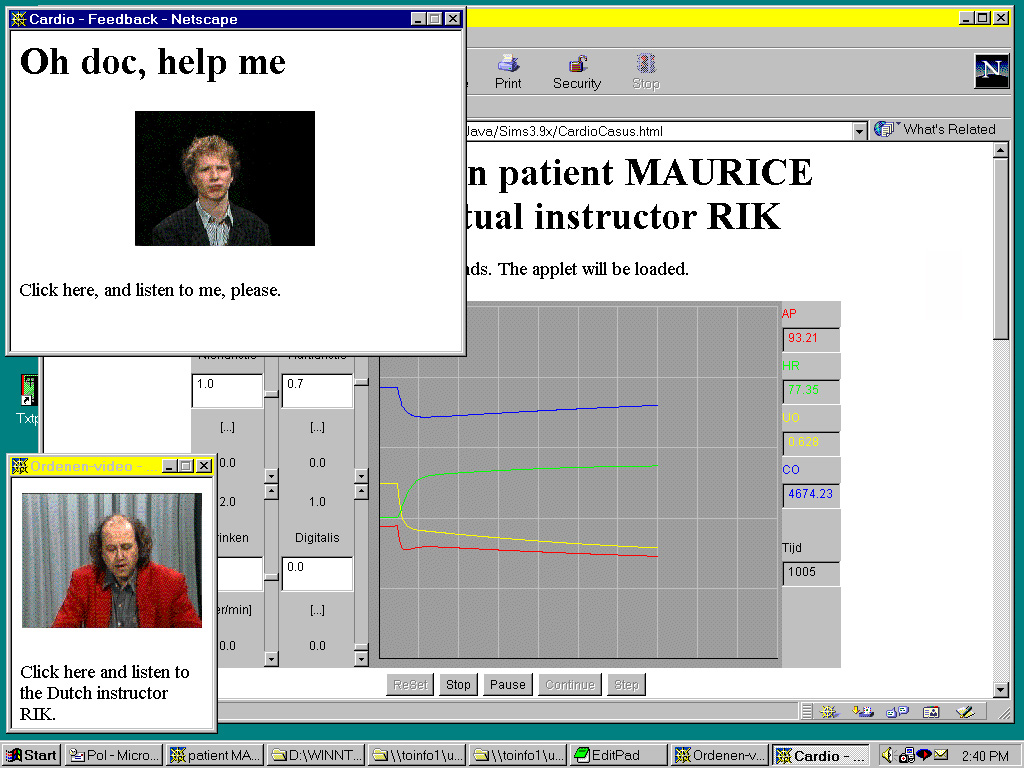
Screendump 1. Simulation site with CARDIO; built with 'SimLib' and JavaTHESIS.
2. Problem: programming
At our faculty Educational Science and Technology (EDTE) (in Dutch TO) we have developed special courses around Html and JavaScript in the first three years [1], [2] [3]. So we have no practical course around Java in the obliged part of the curriculum; only a not-obliged course about simulations, games and micro-worlds in the fourth year.
Our management doesn't accept real programming courses with Java for our students in the first three years. They only accept some experiences there with JavaScript and of course: Html.
3. Solution: building blocks
To make students learning the power of Java we have developed some libraries 'WebLib' and 'SimLib' with special Java-applets. These didactical very special applets diverge from very easy to complex and intelligent components. So our students have the possiblities to learn designing and developing learning- and instruction-environments with complex components on a relative easy way. Simultaneously we have collected old multimedial materials from other courses: audio elements, video fragments, pictures and photographs in a library with elements 'WebStuff' [1].
We combine these courses with our research & development-projects so our students can reuse or redesign these components and reuse these elements.
This contribution will discuss our products, our libraries, our courses, our research and our hypotheses.
4. References
All courses, components, applets, libraries and texts referenced here, including these instructions, are also available through our web-site:
http://users.edte.utwente.nl/min
[1] Min, R. and J. de Goeijen (2001)
http://to-www.to.utwente.nl/TO/ism/course/pro
[2] Diana, I. De, and R. Min (2000)
http://projects.edte.utwente.nl/cea/2000
[3] Kommers, P., and R. Min (2001)
http://to-www.to.utwente.nl/TO/ism/course/mmop
Projects
- SimLib-project
- WebLib-project
- ICS-project
- PI-theory-project
- JavaTHESIS-project
Topics
- Web-based Materials
- Model-driven Simulations
- Parallel Instruction theory (an design theory: the PI theory)
- Parallelism as Concept and Design Phenomena
- Open Learning Environments (with parallel instructions)
- Embedded Simulation Environments
- E-Learning
- Interactive Scientific Papers (ISP)
Methods & Techniques
- Applets as building blocks
- Java and Javascript templetes (shells)
- Libraries: WebLib and SimLib
- E-Learning and Web-Based Training (WBT)
- Intelligent feedback (ICS)
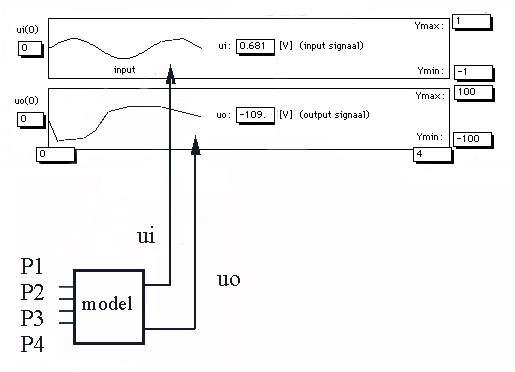
Principle of model-driven simulations
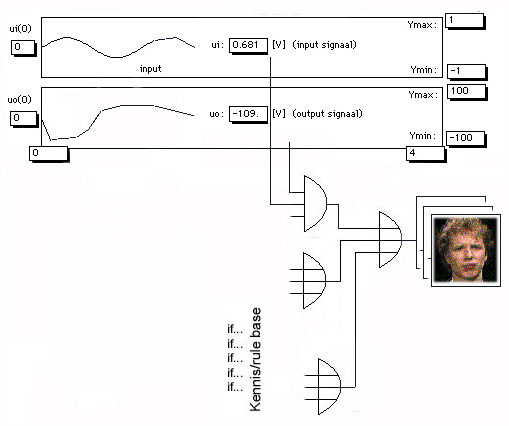
Principle of intelligent feedback: here video fragments
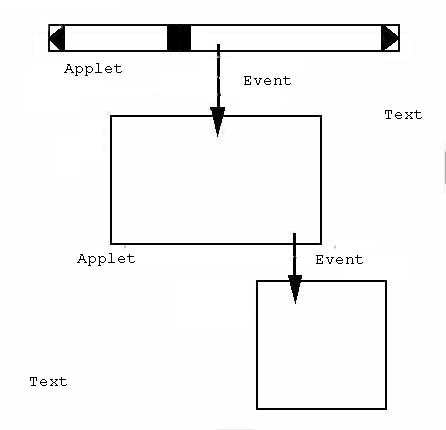
Principle of building blocks with events between input-applets and output-applets
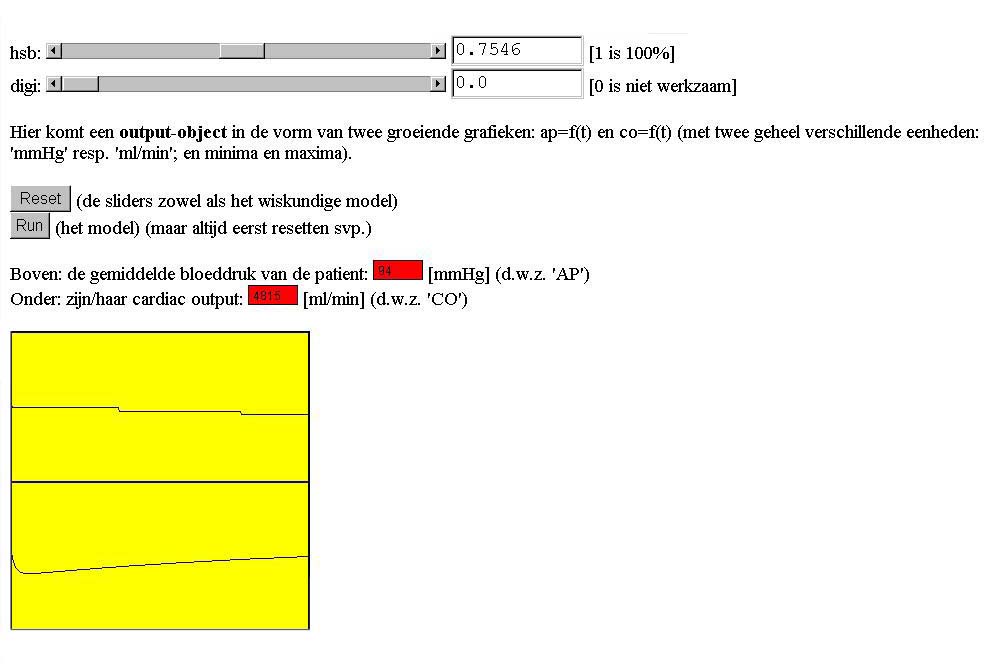
Screendump 2. Simulation site with CARDIO; built with 'WebLib' and javascript.
Parallel instruction
type 1 order parallelism:

left: the open doing environment; right: the instruction (scrollable)
Parallel instruction
type 2 order parallelism (a):

left: worksheet with applet; right: instruction
Parallel instruction
type 2 order parallelism (b):

left: applet; right: home-base with instruction etc.
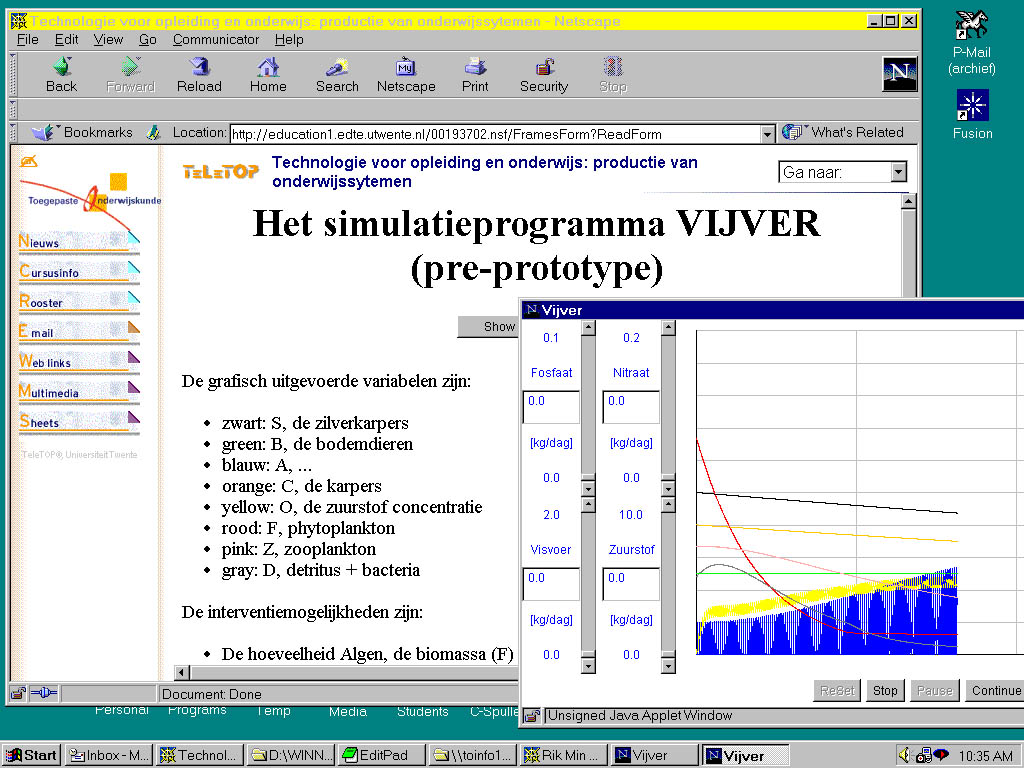
Screendump 3. Simulation site with FISH POND; built with 'SimLib' and JavaTHESIS (embedded in TeleTOP)
Simulators
- The phenomena of the Cardiovascular System (2 versions)
- The phenomena of the Water and Salt regulation in the human body
- The phenomena of the Dutch Economy
- The phenomena of an Sun heater
- The phenomena of an Transistor
- The phenomena of Resistances and Capacitors (RC-networks - Filters)
- The phenomena of an Fishing Pond
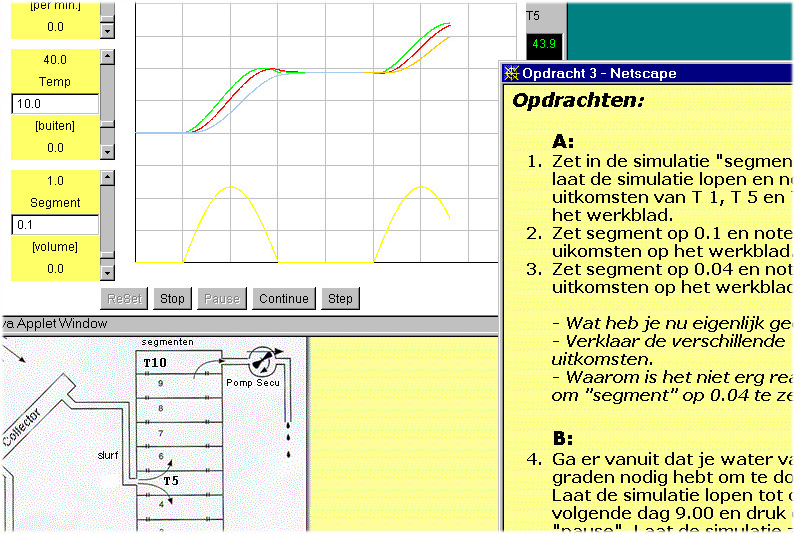
Screendump 4. Simulation site with BOILER; built with 'SimLib' and JavaTHESIS
Conclusions
- Built your own Libraries (as WebLib and SimLib)
- Connect Applets with Applets
- Connect Input Applets with Output Applets (with events)
- Use JavaScript and 'WebLib' with Building Blocks
- Use Java and 'SimLib' for model-driven Simulations
- Use JavaTHESIS (Min, Sikken, de Goeijen; 1997 - 2001)
- Use templates or shells (as in JavaTHESIS and WebLib)
== more about parallellism and the PI theory ==
== parallellism and the PI theory ==
Enschede: Tampere, june 29 & Fribourg, aug 30, 2001.








